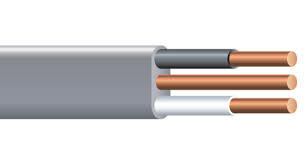Daddy Tanuki
Solar Wizard
finally trying to bring my inverters, and house/shop wiring to roughly US specs or better (currently Japanese hodgepodge specs.) and I am attempting to understand and compare US specifications for wiring to Japanese measurements so that I can convert it to the local Japanese specs when trying to order, that or I can compare prices to see if it might be cheaper to order from the states via the USPS. (i have base access)
looking at pictures just does not compute in my brain most of the time, and trying to explain to Japanese suppliers is a PITA. so I was hoping that somebody that is currently doing wiring on a system could set aside few samples of wiring in 6" lengths so that I can compare them to the Japanese offerings.
I need 6" of samples of the following
4 wire THHN/THWN in 6AWG (is this normally single or multi strand?)
UF-B in 6/3-UFB
6 AWG XHHW building wire (or thicker)
if someone could set aside a few 6" (inch) pieces of the above and mail them to me, I will of course pay for postage and for your time. (Or I can gladly source and send back something from Japan you might want.)
anybody who can help please PM me.
@Hedges , @Brucey @sunshine_eggo If you know someone who is currently doing their wiring in the US and might be able to help can you pass the word on?
thanks, Ken
looking at pictures just does not compute in my brain most of the time, and trying to explain to Japanese suppliers is a PITA. so I was hoping that somebody that is currently doing wiring on a system could set aside few samples of wiring in 6" lengths so that I can compare them to the Japanese offerings.
I need 6" of samples of the following
4 wire THHN/THWN in 6AWG (is this normally single or multi strand?)
UF-B in 6/3-UFB
6 AWG XHHW building wire (or thicker)
if someone could set aside a few 6" (inch) pieces of the above and mail them to me, I will of course pay for postage and for your time. (Or I can gladly source and send back something from Japan you might want.)
anybody who can help please PM me.
@Hedges , @Brucey @sunshine_eggo If you know someone who is currently doing their wiring in the US and might be able to help can you pass the word on?
thanks, Ken






